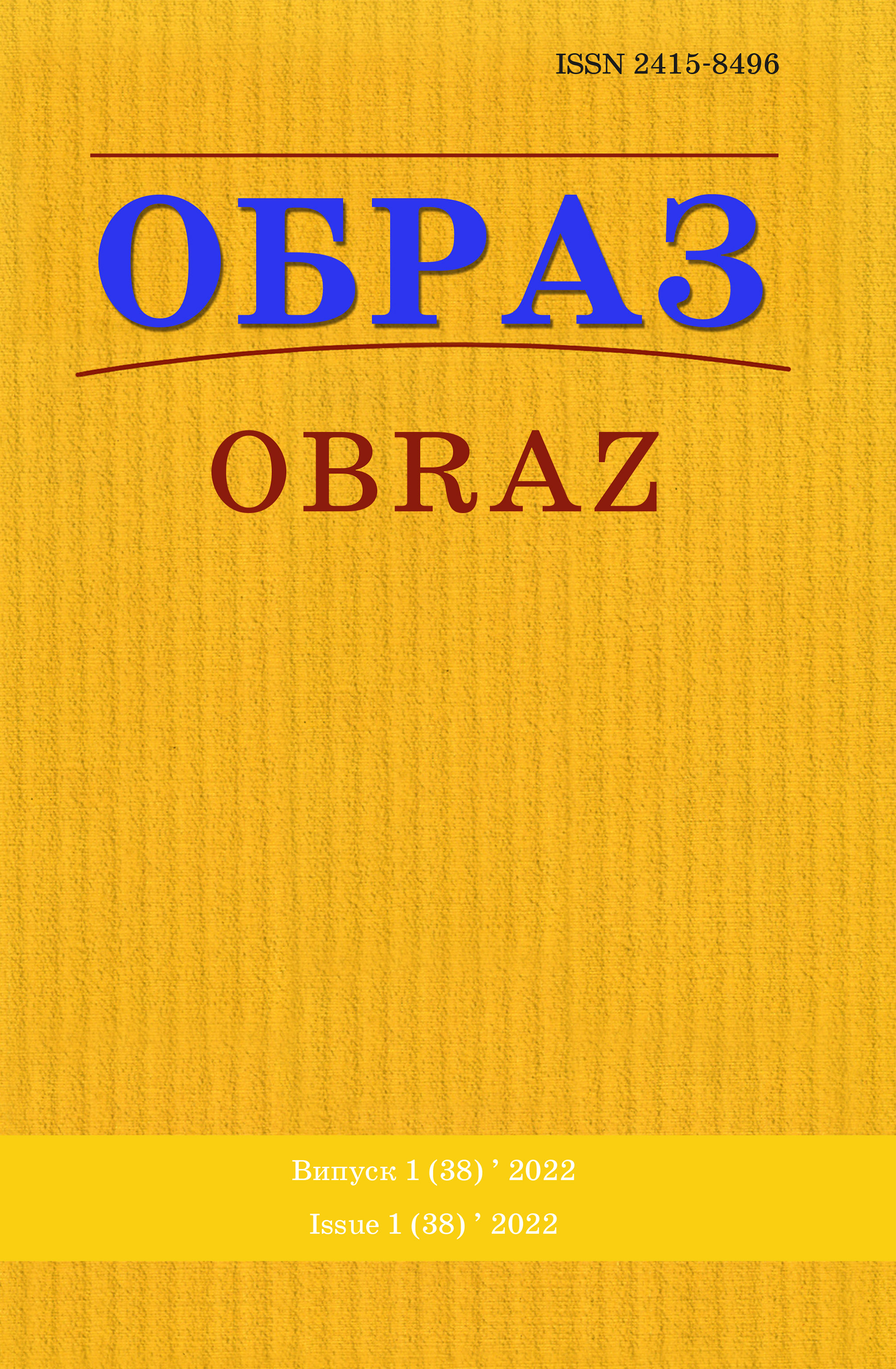Анотація
Актуальність дослідження полягає в необхідності побудови позитивного медіаобразу університету з метою підвищення престижу української вищої освіти в суспільстві, зокрема серед абітурієнтів та студентів. Складність у творенні сприятливого образу ЗВО зводиться до проблеми відсутності чітких механізмів образотворення університету, а саме засобів його формування. Тож метою роботи є окреслення засобів творення медіаобразу ЗВО на основі текстів всеукраїнських видань про університет. Кількісно-відсоткові показники позитивно й негативно оцінних текстів, а також наявність значного переліку проблем ЗВО в текстах медіа стали підґрунтям для акцентуації уваги на засобах негативізації медіаобразу університету.
Посилання
1. Bogdan, Ye. (2007), «The media image of Russia as a concept of the theory of journalism», Vestnik Moskovskogo universiteta. Zhurnalistika [Bulletin of Moscow University. Journalism], no. 4, pp. 76.
2. Ilko Kucheriv Democratic Initiatives Foundation (2015), «Higher education in Ukraine: public opinion of students», available at: https://dif.org.ua/article/vishcha-osvita-v-ukrainigromadska-dumka-studentiv (accessed 01 February 2022).
3. Galinskaya, T. (2013), «The concept of a media image and the problem of its reconstruction in modern linguistics», Vestnik Orenburgskogo gosudarstvennogo universiteta [Bulletin of the Orenburg State University], no. 11, pp. 91–94.
4. Horbenko, N. (2014), «Features of image formation of a modern university», Osvitolohichnyi dyskurs [Educational Discourse], no. 1, рр. 36–45, available at: http://nbuv.gov.ua/UJRN/ osdys_2014_1_6 (accessed 01 February 2022).
5. Institute of Mass Media (2020), «Report on monitoring compliance with professional standards in online media. The first wave of monitoring in 2020», available at: https://imi. org.ua/monitorings/zvit-z-monitoryngu-dotrymannya-profstandartiv-v-onlajn-media-pershahvylya-monitoryngu-u-2020-rotsii31632?fbclid=IwAR3Js48wuMEls0mJVOPmGhkjpY1r5iCHzU2PD53yaWcYO_LEMM_I0GLmQU (accessed 02 February 2022).
6. Institute of Mass Media (2017), «Report on the monitoring of journalistic standards in the online media and press: the first quarter of 2017», available at: https://imi.org.ua/monitorings/ yak-porushuyut-jurnalistski-standarti-ukrajinski-drukovani-ta-onlayn-zmi-doslidjennyaimi-i28406 (accessed 01 February 2022).
7. Kyrychok, A. (2015), «The use of new media in shaping the image of the university», Visnyk Knyzhkovoi palaty [Bulletin of the Book Chamber], no. 2, pp. 42–44.
8. «Communication strategy of the Ministry of Education and Science for 2017-2020 (2017)», available at: https://mon.gov.ua/ua/news/usi-novivni-novini-2017-10-27-mon-zatverdilokomunikaczijnu-strategiyu-na-2017-2020-roki-perexodimo-vid-informaczijno (accessed 01 February 2022).
9. Kuznietsova, T. (2010), Axiological Models of Mass Media Information: monograph, Universytetska knyha, Sumy, 304 р.
10. Marushchak, A. (2012), «Political and social image of Russia in the American media space», Zhurnalistskiy ezhegodnik [Journalistic Yearbook], no. 1, рр. 93–96.
11. Ukrainian Institute of the Future (2021), «Education in Ukraine: one in five aims to study only abroad», available at: https://uifuture.org/publications/osvita-v-ukrayini-kozhen-pyatyjnaczilenyj-vchytysya-tilky-za-kordonom/ (accessed 04 February 2022).
12. Ostapchuk, I. (2016), Trails and tropeization of English-language media discourse, Abstract of the PhD diss. (phil. sci.), Ivan Franko National University of Lviv, 20 р.
13. Verkhovna Rada of Ukraine (2014), Law of Ukraine «On Higher Education», 28 December 2014, available at: https://zakon.rada.gov.ua/laws/show/1556-18 (accessed 04 February 2022).
14. Protsenko, I. (2015), «The image of the university as a component of the education system», Pedahohichni nauky: teoriia, istoriia, innovatsiini tekhnolohii [Pedagogical sciences: Theory, History, Innovative technologies], no. 9, pp. 391–399, available at: http://repository. sspu.sumy.ua/bitstream/123456789/1959/1/Imidzh%20vuzu.pdf (accessed 05 February 2022).
15. Institute of Mass Media (2020), «Rating of topsites of Ukraine», available at: https://imi. org.ua/monitorings/rejtyng-top-sajtiv-ukrayiny-i34992 (accessed 02 February 2022).
16. Rizun, V. (2012), «Social communication approach in science and social engineering», Komunikatsiia: zbirka z pytan komunikatsii u suspilstvi [Communication: Collection of Communication Issues in Society], no. 8, pp. 8–19, available at: http://journlib.univ.kiev.ua/ Socialniy_pidhid.pdf (accessed 04 February 2022).
17. Serebrianska, I. (2018), Dictionary of Vocabulary in the Field of Education: National-European Identity, SumDU, 341 р., available at: https://essuir.sumdu.edu.ua/ handle/123456789/65981 (accessed 04 February 2022).
18. Shevtsova, D. (2015), «From the publicistic image to the media image: the movement of scientific thought», Sovremennye problemy nauki i obrazovaniya [Modern Problems of Science and Education], no. 73, available at: https://science-education.ru/ru/article/view?id=23609 (accessed 04 February 2022).
19. Scacco, J. & Muddiman, A. (2016), «Investigating the influence of «clickbait» news headlines», Center for Media Engagement, available at: https://mediaengagement.org/research/ clickbait-headlines/ (accessed 04 February 2022).
20. Trussler, М. & Soroka, S. (2014), «Consumer Demand for Cynical and Negative News Frames», The International Journal of Press/Politics, no. 19, рр. 3, available at: https://doi. org/10.1177/1940161214524832 (accessed 04 February 2022).

Ця робота ліцензується відповідно до ліцензії Creative Commons Attribution 4.0 International License.

